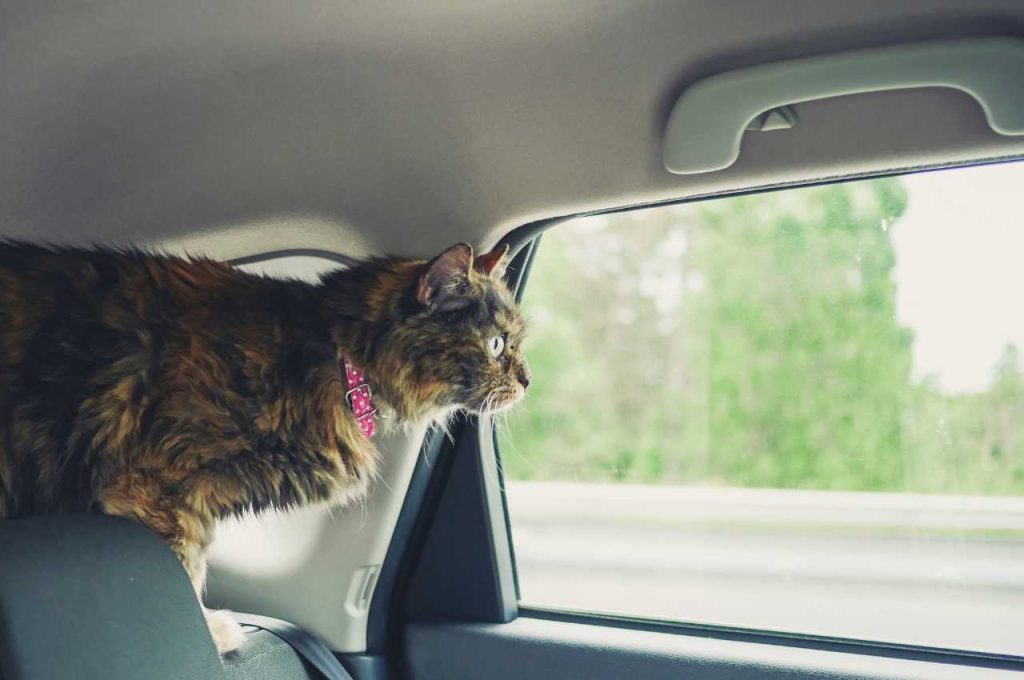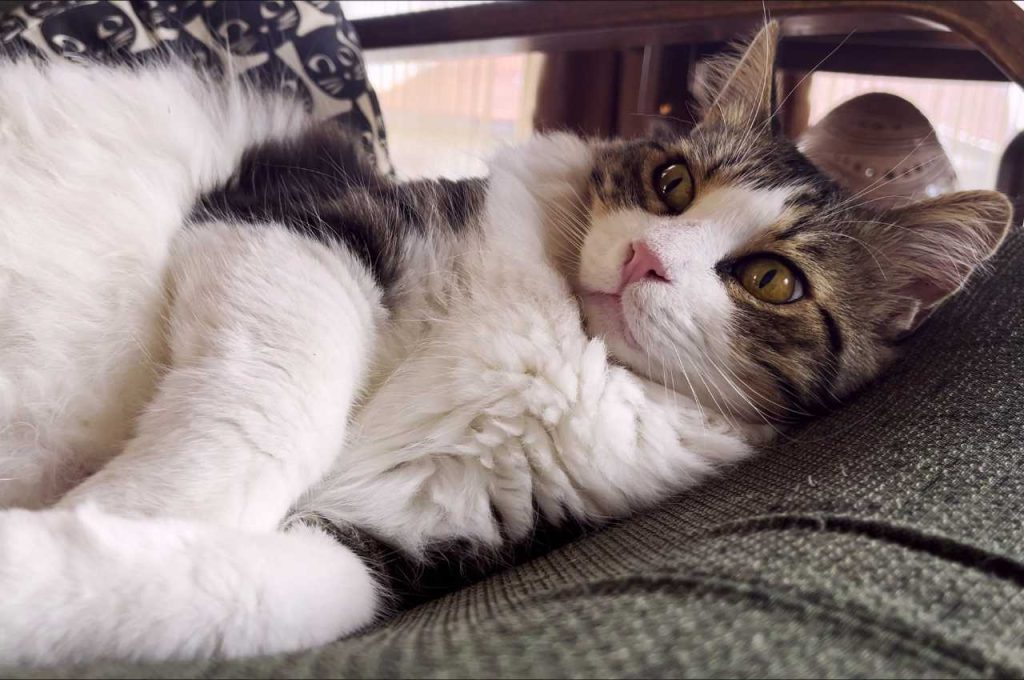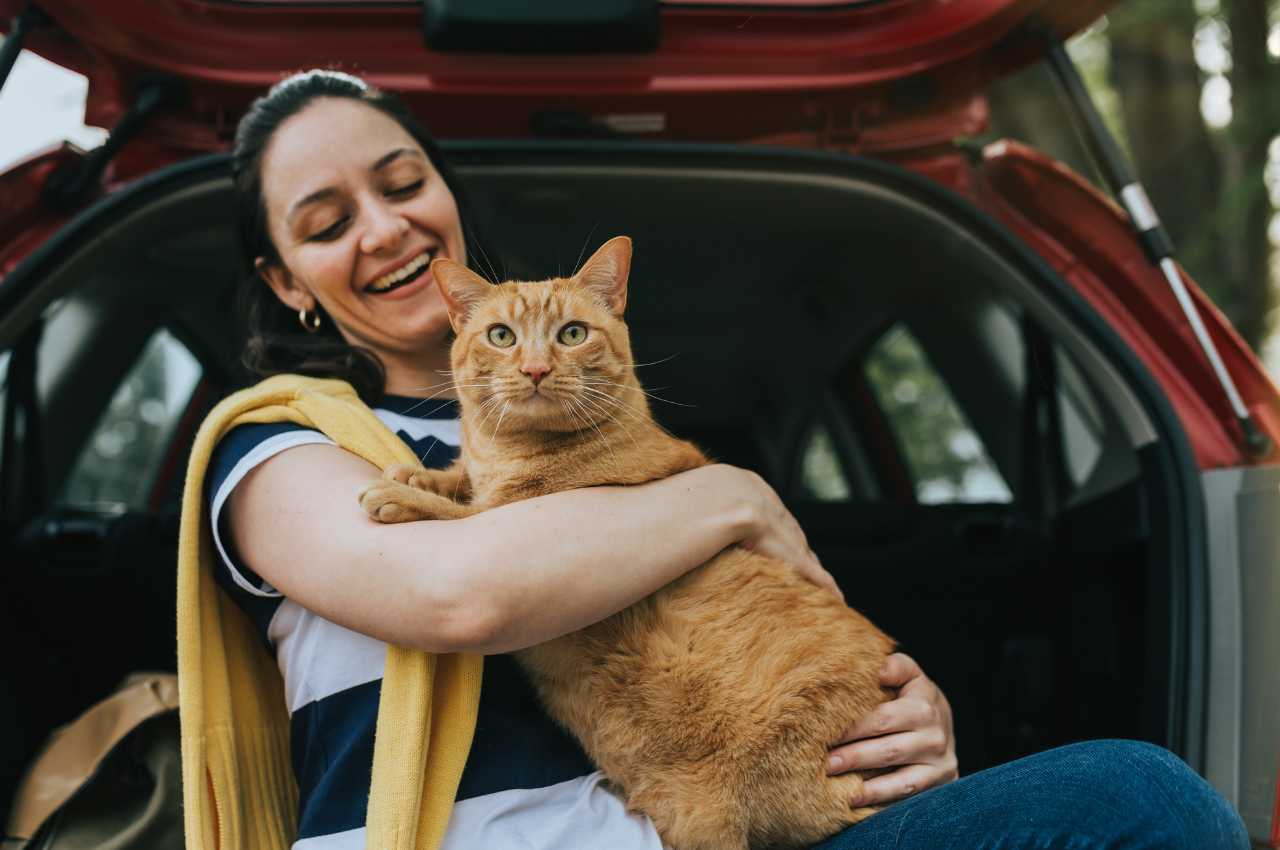To transport a cat without a carrier, use a secure leash and harness to keep the cat restrained and safe. Also, consider placing the cat in a sturdy, well-ventilated pet stroller for added comfort and security during the journey.
Transporting a cat without a carrier can be a challenge, especially if your feline friend is not accustomed to being handled or confined. However, with the right approach and equipment, it is possible to transport your cat safely and comfortably. Whether you need to take your cat to the vet, travel with them, or simply want to introduce them to new experiences, knowing how to transport a cat without a carrier can be a valuable skill for any cat owner.
We will explore some practical tips and techniques for safely transporting a cat without a carrier, ensuring a stress-free experience for both you and your furry companion.
Introduction to Feline Transportation
Transporting a cat without a carrier can be a challenge. One option is to use a cat harness and leash. Another is to create a comfortable and secure space in your car for your cat.

Why Carriers Are Commonly Used
Feline transportation can be challenging, especially without a carrier. Carriers are commonly used because they provide security and comfort for cats during travel. In scenarios without a carrier, alternative methods like using a leash or a blanket can be employed. It is crucial to prioritize your cat’s safety and well-being when transporting them without a carrier. Let’s explore the different ways to transport a cat without a carrier.
Pre-travel Preparation
Before embarking on a journey with your cat, it’s essential to make thorough pre-travel preparations to ensure a safe and comfortable experience for your feline friend. From getting your cat comfortable with the travel environment to implementing safety measures, these steps are crucial for a stress-free trip without a carrier.
Getting Your Cat Comfortable
Helping your cat acclimate to the upcoming journey is vital. Start by introducing your cat to the travel crate gradually. Place familiar bedding and toys inside the crate to make it more appealing. Additionally, encourage your cat to explore the crate by leaving the door open and offering treats inside.
Safety Measures Before The Journey
- Ensure your cat is up to date on vaccinations and has proper identification, such as a collar with tags or a microchip.
- Consult your veterinarian to ensure your cat is healthy and fit for travel.
- Secure a harness and leash to prevent your cat from escaping during outdoor breaks.
- Place a familiar blanket or piece of clothing with your scent in the carrier to provide comfort and familiarity during the journey.
Choosing The Right Equipment
When it comes to transporting a cat without a carrier, choosing the right equipment is crucial. This ensures your cat’s safety and comfort during the journey.
Harnesses and Leashes
Harnesses provide a secure way to restrain your cat and prevent escapes. Opt for adjustable harnesses that fit your cat comfortably. Leashes allow you to guide your cat during transport. Choose a lightweight, durable leash that gives your cat freedom while keeping them under control.
Alternative Containers
Soft-sided pet carriers are a good alternative to traditional hard carriers. These carriers are comfortable and easy to store when not in use. Pet strollers can be used for transporting cats, providing a secure and comfortable space for your feline friend.
Creating a Comfortable Environment
Transporting a cat without a carrier can be challenging, but with some careful planning, it is possible to create a comfortable environment. Utilize a secure pet harness or a soft-sided carrier alternative, ensure the car is quiet and calm, and provide familiar scents and toys to help keep your feline friend at ease during the journey.
Using Familiar Blankets
When transporting your cat without a carrier, it’s important to create a comfortable environment to reduce their stress and anxiety. One way to achieve this is by using familiar blankets. Cats are highly sensitive to scents and having a blanket with familiar smells can help them feel more secure during the journey.
To prepare for the trip, grab a blanket that your cat regularly uses or one that has their scent on it. This could be their favorite sleeping blanket or a blanket from their bed. The familiar scent will provide them with a sense of comfort and familiarity, making the transportation experience less overwhelming. Place the blanket in the area where your cat will be during the journey. This could be the backseat of a car, a designated space in a van, or any other appropriate location. The presence of the familiar blanket will help your cat feel more at ease and reduce their stress levels.
Calming Scents and Toys
In addition to using familiar blankets, you can further create a comfortable environment for your cat by introducing calming scents and toys. Certain scents, such as lavender or chamomile, have calming effects on cats and can help reduce their anxiety.
Before the journey, consider using a cat-friendly calming spray or diffuser. These products contain natural ingredients that promote relaxation and can help create a soothing atmosphere for your cat. Simply spray the calming spray in the air or plug in the diffuser in the vehicle to release the calming scent. Furthermore, providing your cat with their favorite toys can help distract them and alleviate any stress they may be feeling. Bring along toys that your cat enjoys playing with, such as interactive toys or catnip-filled plushies. These toys can provide entertainment and comfort during the journey.
Remember to securely fasten any toys to prevent them from becoming hazards while in transit. Safety should always be a top priority when transporting your cat without a carrier.
Safe Handling Techniques
When it comes to transporting a cat without a carrier, it is crucial to prioritize the safety and well-being of your feline friend. Safe handling techniques play a significant role in ensuring a stress-free experience for both you and your cat. By following proper ways to hold your cat and taking steps to avoid stress and anxiety, you can make the transportation process more comfortable and secure.

Proper Ways to Hold Your Cat
When handling your cat without a carrier, it is essential to use the correct techniques to ensure their safety and prevent any potential harm. Here are some proper ways to hold your cat:
- Scoop technique: Gently place one hand under your cat’s chest, with your palm supporting their front legs. Use your other hand to support their hindquarters. Lift your cat close to your body, keeping a firm but gentle grip.
- Secure hold: If your cat tends to be more anxious or wriggly, you can wrap a towel or blanket around them to provide a sense of security. This can also help prevent scratches or accidental escape.
- Do not restrain: Avoid restraining your cat too tightly or restricting their movement. Allow them some freedom to adjust their position and find a comfortable spot.
Avoiding Stress and Anxiety
Transporting a cat without a carrier can be a stressful experience for them. To minimize anxiety and ensure a smoother journey, consider the following tips:
- Familiarize with the environment: Before transporting your cat, allow them to explore and become familiar with the vehicle or carrier alternative. This can help reduce their anxiety during the journey.
- Use calming aids: Consult with your veterinarian about using natural calming aids, such as pheromone sprays or calming treats, to help keep your cat relaxed during transportation.
- Keep a quiet environment: Reduce noise and distractions in the vehicle to create a calm atmosphere for your cat. Avoid sudden loud noises or changes in the environment that may startle them.
- Take breaks: If the journey is long, plan regular breaks to allow your cat to stretch their legs, use the litter box, and have some water and food. This will help keep them comfortable and reduce stress.
By implementing these safe handling techniques and taking steps to minimize stress and anxiety, you can ensure a safe and comfortable transportation experience for your cat, even without a carrier. Remember to always prioritize their well-being and provide a reassuring environment throughout the journey.
In-vehicle Safety
Transporting a cat without a carrier can be challenging, but ensuring in-vehicle safety is paramount. Follow these tips to keep your feline friend secure: secure them with a harness and leash, place them in a well-ventilated crate, or create a safe space using a seatbelt and blanket.
Transporting your cat without a carrier can be a challenge, but it’s not impossible. You need to ensure that your cat is secure and comfortable during the ride. One of the most critical aspects of transporting your cat is in-vehicle safety. Here are some tips to make sure your feline friend is safe and sound during the journey.
Securing Your Cat in The Car
Make sure your cat is secured in the car, so it doesn’t jump around. You can use a cat harness and leash to keep your pet in place. This will prevent your cat from climbing on the dashboard or other parts of the car. You can also use a pet seat belt to secure your cat in the back seat. This will prevent your pet from being thrown forward in case of an accident.
Maintaining a Calm Atmosphere
Maintaining a calm atmosphere is essential during the journey. Cats can be easily stressed during travel, so it’s essential to keep them calm and relaxed. Make sure the car is quiet and comfortable. You can play some soft music to calm your cat down. You can also use a calming spray or treats to help your cat relax.
Using a Crate or Carrier
While it’s possible to transport your cat without a carrier, it’s always best to use one. A carrier will help your cat feel secure and comfortable during the journey. Make sure the carrier is the right size for your cat and is well-ventilated. You can also put some soft bedding in the carrier to make it more comfortable. Transporting your cat without a carrier requires some planning and preparation. It’s crucial to ensure your pet is secure and comfortable during the journey.
Following these tips will help you transport your cat safely and comfortably. Remember to maintain a calm atmosphere and use a carrier if possible. With the right preparation, you can make your next trip with your furry friend a success.
Arriving at Your Destination
After successfully transporting your cat without a carrier, it’s crucial to ensure a smooth transition upon reaching your destination. Acclimating your cat and providing post-travel care are essential for their well-being and comfort.
Acclimating Your Cat
Upon arrival, find a quiet, enclosed space where your cat can gradually adjust to the new environment. Create a safe zone with familiar items such as their bed, toys, and litter box. Allow your cat to explore the area at their own pace, providing reassurance and comfort as needed. Maintain a calm atmosphere to minimize stress and anxiety during this acclimation period.
Post-travel Care
Once you’ve arrived, it’s important to check your cat for any signs of distress or discomfort. Observe their behavior and look for indications of stress, such as excessive meowing or restlessness. Offer fresh water and a small amount of food, but avoid overfeeding immediately after the journey. Monitor their well-being closely and seek veterinary attention if any concerning symptoms arise.
Troubleshooting Common Issues
When transporting a cat without a carrier, troubleshooting common issues can make the process smoother. Here are some practical tips for dealing with escapes and managing motion sickness.

Dealing With Escapes
If your cat tends to bolt when out of the carrier, try using a harness and leash for added security. Keep a firm grip on the leash to prevent sudden sprints. Create a calm environment by minimizing loud noises and sudden movements.
Managing Motion Sickness
To help prevent motion sickness, limit your cat’s food intake before travel and keep the car well-ventilated. Offer a familiar blanket or bed for comfort. Consider speaking to your vet about potential medications for motion sickness.
Conclusion
Transporting a cat without a carrier can be a daunting task, but with these tips, it’s possible to make the journey easier for both you and your feline friend. Remember to stay calm and patient, and make sure your cat is comfortable and secure throughout the trip. Whether you’re traveling by car, plane, or public transportation, following these guidelines will help ensure a safe and stress-free journey. With a little preparation and a lot of love, you and your cat can enjoy many adventures together!
